Matej Kristan
Distractor-Aware Memory-Based Visual Object Tracking
Sep 17, 2025Abstract:Recent emergence of memory-based video segmentation methods such as SAM2 has led to models with excellent performance in segmentation tasks, achieving leading results on numerous benchmarks. However, these modes are not fully adjusted for visual object tracking, where distractors (i.e., objects visually similar to the target) pose a key challenge. In this paper we propose a distractor-aware drop-in memory module and introspection-based management method for SAM2, leading to DAM4SAM. Our design effectively reduces the tracking drift toward distractors and improves redetection capability after object occlusion. To facilitate the analysis of tracking in the presence of distractors, we construct DiDi, a Distractor-Distilled dataset. DAM4SAM outperforms SAM2.1 on thirteen benchmarks and sets new state-of-the-art results on ten. Furthermore, integrating the proposed distractor-aware memory into a real-time tracker EfficientTAM leads to 11% improvement and matches tracking quality of the non-real-time SAM2.1-L on multiple tracking and segmentation benchmarks, while integration with edge-based tracker EdgeTAM delivers 4% performance boost, demonstrating a very good generalization across architectures.
What Holds Back Open-Vocabulary Segmentation?
Aug 06, 2025Abstract:Standard segmentation setups are unable to deliver models that can recognize concepts outside the training taxonomy. Open-vocabulary approaches promise to close this gap through language-image pretraining on billions of image-caption pairs. Unfortunately, we observe that the promise is not delivered due to several bottlenecks that have caused the performance to plateau for almost two years. This paper proposes novel oracle components that identify and decouple these bottlenecks by taking advantage of the groundtruth information. The presented validation experiments deliver important empirical findings that provide a deeper insight into the failures of open-vocabulary models and suggest prominent approaches to unlock the future research.
3rd Workshop on Maritime Computer Vision (MaCVi) 2025: Challenge Results
Jan 17, 2025Abstract:The 3rd Workshop on Maritime Computer Vision (MaCVi) 2025 addresses maritime computer vision for Unmanned Surface Vehicles (USV) and underwater. This report offers a comprehensive overview of the findings from the challenges. We provide both statistical and qualitative analyses, evaluating trends from over 700 submissions. All datasets, evaluation code, and the leaderboard are available to the public at https://macvi.org/workshop/macvi25.
PanSR: An Object-Centric Mask Transformer for Panoptic Segmentation
Dec 13, 2024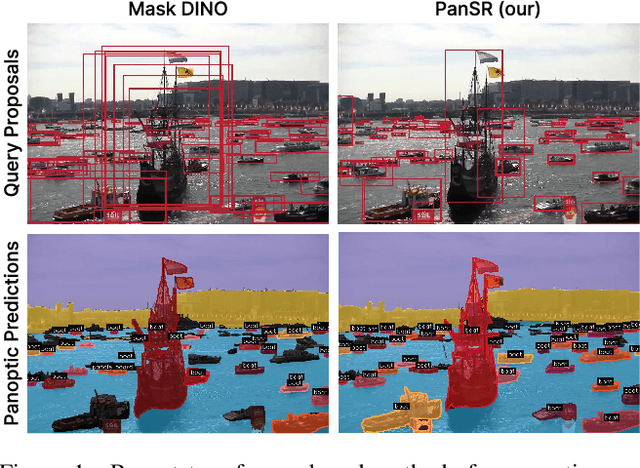
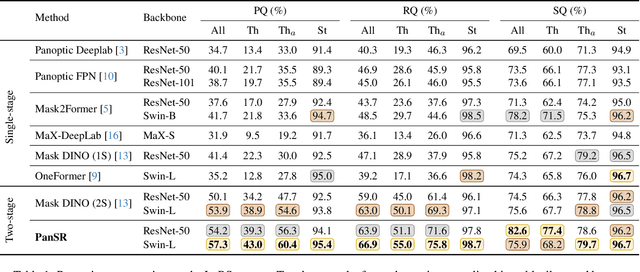
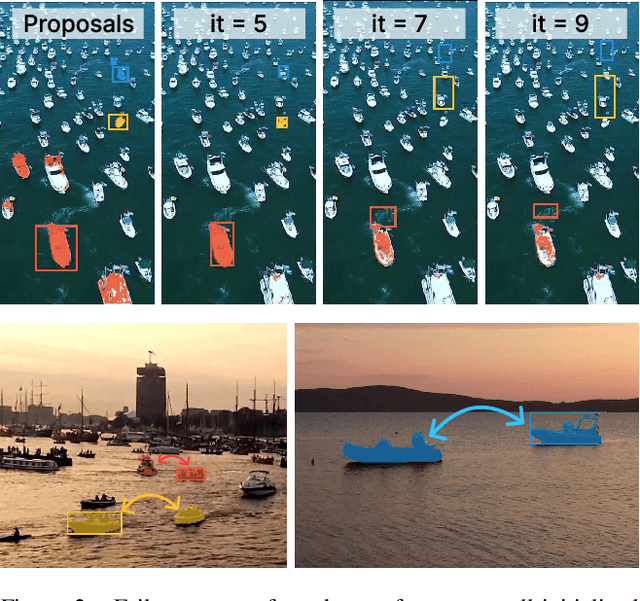

Abstract:Panoptic segmentation is a fundamental task in computer vision and a crucial component for perception in autonomous vehicles. Recent mask-transformer-based methods achieve impressive performance on standard benchmarks but face significant challenges with small objects, crowded scenes and scenes exhibiting a wide range of object scales. We identify several fundamental shortcomings of the current approaches: (i) the query proposal generation process is biased towards larger objects, resulting in missed smaller objects, (ii) initially well-localized queries may drift to other objects, resulting in missed detections, (iii) spatially well-separated instances may be merged into a single mask causing inconsistent and false scene interpretations. To address these issues, we rethink the individual components of the network and its supervision, and propose a novel method for panoptic segmentation PanSR. PanSR effectively mitigates instance merging, enhances small-object detection and increases performance in crowded scenes, delivering a notable +3.4 PQ improvement over state-of-the-art on the challenging LaRS benchmark, while reaching state-of-the-art performance on Cityscapes. The code and models will be publicly available at https://github.com/lojzezust/PanSR.
A Distractor-Aware Memory for Visual Object Tracking with SAM2
Nov 26, 2024Abstract:Memory-based trackers are video object segmentation methods that form the target model by concatenating recently tracked frames into a memory buffer and localize the target by attending the current image to the buffered frames. While already achieving top performance on many benchmarks, it was the recent release of SAM2 that placed memory-based trackers into focus of the visual object tracking community. Nevertheless, modern trackers still struggle in the presence of distractors. We argue that a more sophisticated memory model is required, and propose a new distractor-aware memory model for SAM2 and an introspection-based update strategy that jointly addresses the segmentation accuracy as well as tracking robustness. The resulting tracker is denoted as SAM2.1++. We also propose a new distractor-distilled DiDi dataset to study the distractor problem better. SAM2.1++ outperforms SAM2.1 and related SAM memory extensions on seven benchmarks and sets a solid new state-of-the-art on six of them.
A Novel Unified Architecture for Low-Shot Counting by Detection and Segmentation
Sep 27, 2024Abstract:Low-shot object counters estimate the number of objects in an image using few or no annotated exemplars. Objects are localized by matching them to prototypes, which are constructed by unsupervised image-wide object appearance aggregation. Due to potentially diverse object appearances, the existing approaches often lead to overgeneralization and false positive detections. Furthermore, the best-performing methods train object localization by a surrogate loss, that predicts a unit Gaussian at each object center. This loss is sensitive to annotation error, hyperparameters and does not directly optimize the detection task, leading to suboptimal counts. We introduce GeCo, a novel low-shot counter that achieves accurate object detection, segmentation, and count estimation in a unified architecture. GeCo robustly generalizes the prototypes across objects appearances through a novel dense object query formulation. In addition, a novel counting loss is proposed, that directly optimizes the detection task and avoids the issues of the standard surrogate loss. GeCo surpasses the leading few-shot detection-based counters by $\sim$25\% in the total count MAE, achieves superior detection accuracy and sets a new solid state-of-the-art result across all low-shot counting setups.
DAVE -- A Detect-and-Verify Paradigm for Low-Shot Counting
Apr 25, 2024Abstract:Low-shot counters estimate the number of objects corresponding to a selected category, based on only few or no exemplars annotated in the image. The current state-of-the-art estimates the total counts as the sum over the object location density map, but does not provide individual object locations and sizes, which are crucial for many applications. This is addressed by detection-based counters, which, however fall behind in the total count accuracy. Furthermore, both approaches tend to overestimate the counts in the presence of other object classes due to many false positives. We propose DAVE, a low-shot counter based on a detect-and-verify paradigm, that avoids the aforementioned issues by first generating a high-recall detection set and then verifying the detections to identify and remove the outliers. This jointly increases the recall and precision, leading to accurate counts. DAVE outperforms the top density-based counters by ~20% in the total count MAE, it outperforms the most recent detection-based counter by ~20% in detection quality and sets a new state-of-the-art in zero-shot as well as text-prompt-based counting.
A New Dataset and a Distractor-Aware Architecture for Transparent Object Tracking
Jan 08, 2024
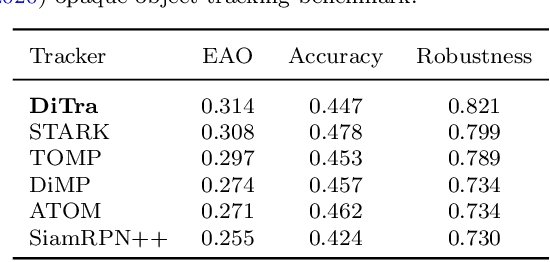
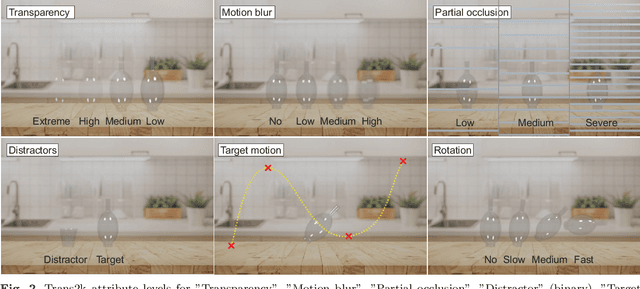
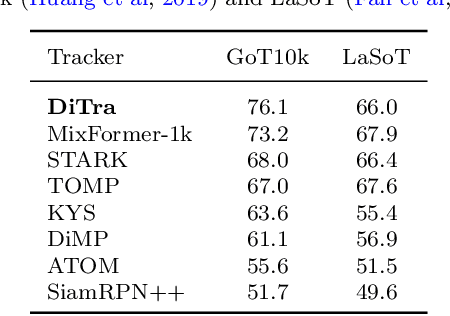
Abstract:Performance of modern trackers degrades substantially on transparent objects compared to opaque objects. This is largely due to two distinct reasons. Transparent objects are unique in that their appearance is directly affected by the background. Furthermore, transparent object scenes often contain many visually similar objects (distractors), which often lead to tracking failure. However, development of modern tracking architectures requires large training sets, which do not exist in transparent object tracking. We present two contributions addressing the aforementioned issues. We propose the first transparent object tracking training dataset Trans2k that consists of over 2k sequences with 104,343 images overall, annotated by bounding boxes and segmentation masks. Standard trackers trained on this dataset consistently improve by up to 16%. Our second contribution is a new distractor-aware transparent object tracker (DiTra) that treats localization accuracy and target identification as separate tasks and implements them by a novel architecture. DiTra sets a new state-of-the-art in transparent object tracking and generalizes well to opaque objects.
The 2nd Workshop on Maritime Computer Vision 2024
Nov 23, 2023



Abstract:The 2nd Workshop on Maritime Computer Vision (MaCVi) 2024 addresses maritime computer vision for Unmanned Aerial Vehicles (UAV) and Unmanned Surface Vehicles (USV). Three challenges categories are considered: (i) UAV-based Maritime Object Tracking with Re-identification, (ii) USV-based Maritime Obstacle Segmentation and Detection, (iii) USV-based Maritime Boat Tracking. The USV-based Maritime Obstacle Segmentation and Detection features three sub-challenges, including a new embedded challenge addressing efficicent inference on real-world embedded devices. This report offers a comprehensive overview of the findings from the challenges. We provide both statistical and qualitative analyses, evaluating trends from over 195 submissions. All datasets, evaluation code, and the leaderboard are available to the public at https://macvi.org/workshop/macvi24.
Cheating Depth: Enhancing 3D Surface Anomaly Detection via Depth Simulation
Nov 02, 2023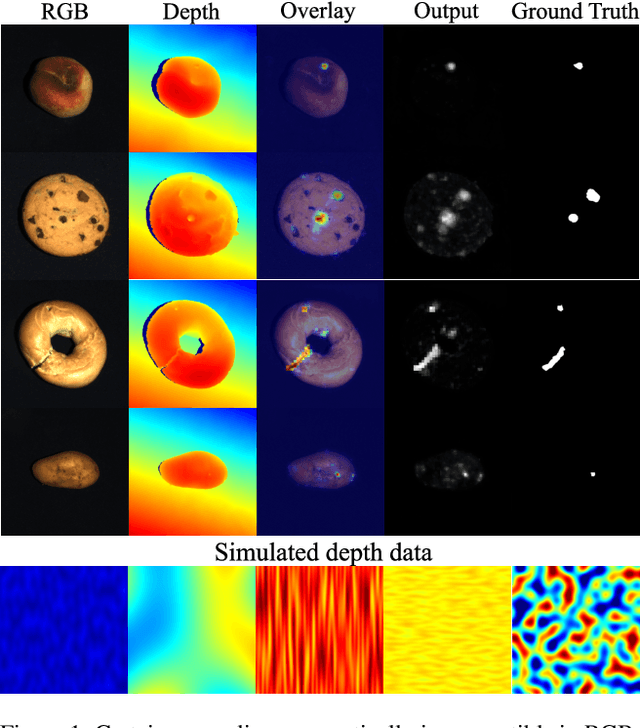
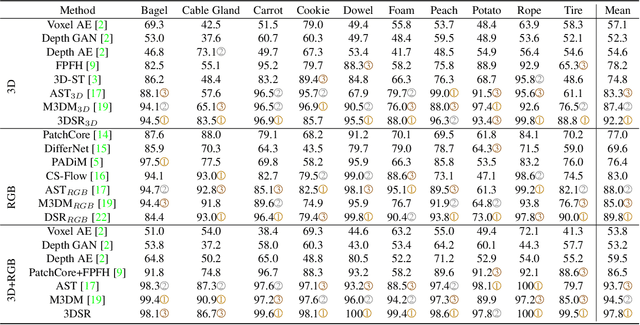
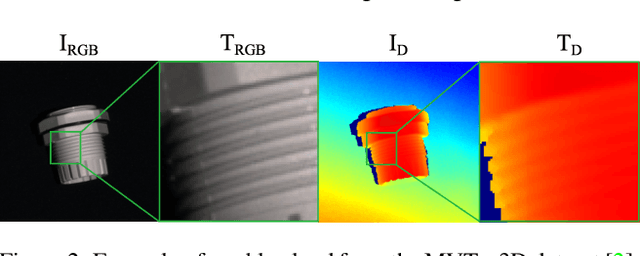
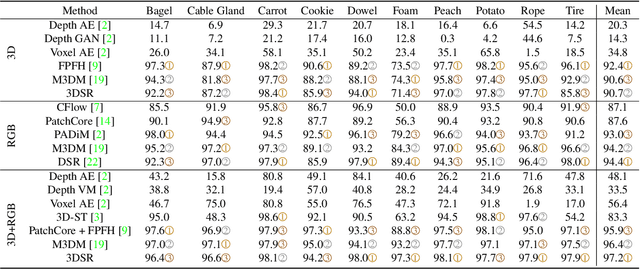
Abstract:RGB-based surface anomaly detection methods have advanced significantly. However, certain surface anomalies remain practically invisible in RGB alone, necessitating the incorporation of 3D information. Existing approaches that employ point-cloud backbones suffer from suboptimal representations and reduced applicability due to slow processing. Re-training RGB backbones, designed for faster dense input processing, on industrial depth datasets is hindered by the limited availability of sufficiently large datasets. We make several contributions to address these challenges. (i) We propose a novel Depth-Aware Discrete Autoencoder (DADA) architecture, that enables learning a general discrete latent space that jointly models RGB and 3D data for 3D surface anomaly detection. (ii) We tackle the lack of diverse industrial depth datasets by introducing a simulation process for learning informative depth features in the depth encoder. (iii) We propose a new surface anomaly detection method 3DSR, which outperforms all existing state-of-the-art on the challenging MVTec3D anomaly detection benchmark, both in terms of accuracy and processing speed. The experimental results validate the effectiveness and efficiency of our approach, highlighting the potential of utilizing depth information for improved surface anomaly detection.
 Add to Chrome
Add to Chrome Add to Firefox
Add to Firefox Add to Edge
Add to Edge